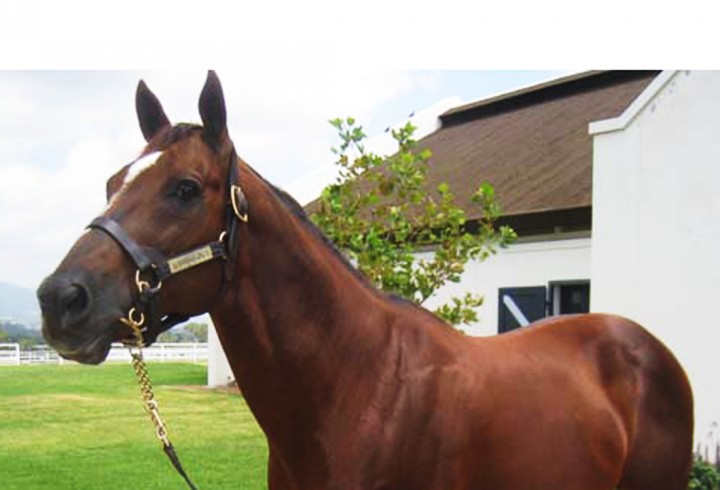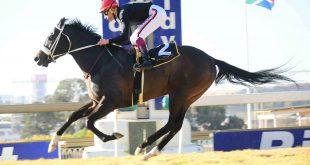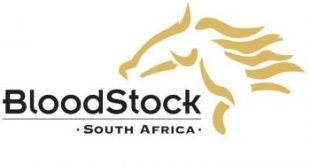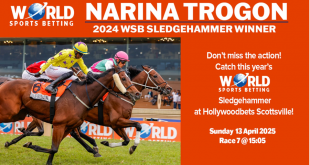The Mauritfontein Stud-bred liver chestnut is regarded by many as the greatest racehorse to ever set foot on the South African turf and his importance is also contained in that he put his trainer Mike de Kock well and truly on the map, as the latter used the opportunity to pave a path to overseas pastures, where he has been a fantastic ambassador for South African racing.
However, there is always a tinge of sadness attached to discussions of Horse Chestnut’s career as injury prevented him from fulfilling a plan to take on the world’s best.
When he put almost ten lengths between himself and the opposition in his final South African start in the Gr 1 SA Derby over 2450m, he gave the impression that he had not come out of a canter.
Nine months late in his first and only start overseas in the Gr 3 Broward Handicap over 1700m on the dirt at Gulfstream Park in the USA, the good natured scoffing about the “zebra” from South Africa with the unusual name ended abruptly when he crossed the line 5,5 lengths clear with the commentator admitting, “He is everything they said he was!”.
One of the American clockers subsequently commented on the phenomenal times Horse Chestnut recorded while appearing to be cantering.
Tragically, the Browyard proved to be his final start of a ten race career (nine victories) as he fractured a lateral splint bone and damaged a ligament in his left foreleg during a training gallop in preparation for the US$500,000 Donn Handicap at Gulfstream.
De Kock, upon first seeing Horse Chestnut at Mauritzfontein, described him as a “mug’s horse”, because “any mug could like him”. One of De Kock’s tests when analysing a young horse was to put his first between the jowels to measure the potential breathing capacity, and he was amazed to find he could fit almost two fists in Horse Chestnut’s throat area.
The match Of Fort Wood (Sadler’s Wells) to the Col Pickering mare London Wall was made by Mauritzfontein stud manager Gavin Schafer, who said in retrospect that the mare was perhaps slightly weak in her first dam. He added, “But when you get excellence in the form of Fort Wood coupled with the looks of Horse Chestnut you know you are in for a good time. He was certainly the most balanced horse we had that year.”
De Kock said that in his early work Horse Chestnut seemed almost “too good” and remembered thinking that if he were able to reproduce it he “would be the most sensational thing I have ever seen in my life.” Therefore there was tremendous tension before his first start on December 20 1997, but he duly stretched clear to win the Maiden Juvenile Plate over 1000m at Turffontein by 5,75 lengths under Johnny Geroudis.
Horse Chestnut wasn’t himself when suffering his only defeat in his next start in the Gr3 Morris Lipschitz Juvenile Plate over 1000m, beaten 1,6 lengths into third by the subsequent Gr 1 South African Guineas winner Clifton King.
De Kock then sent him KZN as he felt the change of environment would be “an important part of his maturing process”. He came out of a comfortable win in the Listed Natal Free Handicap over 1200m at Clairwood “like a lion” and his first two starts as a three-year-old saw emphatic seven and 4,25 lengths wins respectively in the Listed Graham Beck Three-Year-Old Handicap over 1400m and the Gr 2 Dingaans over 1600m, both at Turffontein. The runner up on both occasions was Pablo Zeta, who became infamous as the horse whose heart was broken by Horse Chestnut.
In his next start in the Gr 1 Argus Cape Guineas at Kenilworth he beat the unfortunate Pablo Zeta by 7,15 lengths and the latter was 5,6 lengths clear of the rest.
Horse Chestnut then attempted to become the first three-year-old in nearly 50 years to win the prestigious Gr 1 J&B Met over 2000m and put an amazing eight lengths between himself and the opposition, which was headed by Horse Of The Year Classic Flag.
Horses often improve while in Cape Town and Horse Chestnut showed exactly that as he then became the first horse to complete the Triple Crown (the alternate first leg was the Cape Guineas) by winning the Gr 1 SA Classic by 3,8 lengths and the SA Derby by 9,45 lengths.
Horse Chestnut was by this stage a national hero and Weichong Marwing, who rode him in all of those seven successive victories, stood up in the saddle and blew a kiss to the roaring crowd as he crossed the line in the Derby, a signature moment in the great horse’s career.
He was retired to stud after his injury in the USA and produced a Gr 1 winner, Lucifer’s Stone, in his first crop. However, being a grass horse he was never going to be fashionable in North America and the Horse Chestnut Syndicate took the opportunity to bring him home. He stood six seasons in South Africa at Drakenstein Stud and through the like of Chestnut’s Rocket, Rake’s Chestnut, Silent Force, Banbury and Catkin, was becoming increasingly popular.
Another key to Horse Chestnut’s racing success was his laid back temperament, which allowed his jockey to take him up handy or to the front knowing that he would never over race and waste any of his incredible engine capacity. At stud he formed an unusual friendship with his colleague Trippi. Stallions usually have to be kept apart with iron bars but this pair used to muzzle each other and neigh for one another when taken outside.
Mike de Kock always lets out a deep sigh at some stage during a conversation about Horse Chestnut as nobody will ever know exactly how good he was. Could he have become a worldwide legend?











